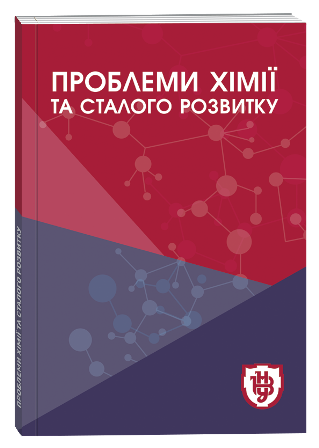CONTAMINATION OF DECENTRALIZED DRINKING WATER SOURCES WITH NITRATES AND RISK ASSESSMENT OF POPULATION HEALTH
DOI:
https://doi.org/10.32782/pcsd-2022-1-10Keywords:
nitrates, decentralized water supply, water quality, disease risk assessmentAbstract
Doubling the rate of nitrogen deposition on the ground, increasing nitrate pollution of drinking water and increasing the risk of certain diseases is an urgent issue for humanity. The aim of the study was to determine the quality of drinking water of decentralized water supply during 2018-2021 in Volochysk MTG, Viitivets OTG and Narkevytsya OTG Khmelnytsky district of Khmelnytsky region and to establish the possible risk of various diseases in a constantly growing anthropogenic load. Field, laboratory-analytical and statistical methods were used. The analysis of the quality of decentralized water supply during 2018-2021 from 297 sampling points located on the territory of Volochysk MTG, Viitivets OTG and Narkevichy OTG of Khmelnytsky district of Khmelnytsky region found that most hydrochemical indicators are acceptable. Exceptions were isolated excesses of nitrites and ammonium ions. In addition, all samples of hardness correspond to solid (35%) and very hard (65%) type of natural water, which exceeds the permissible standards. Deviations from the normative values for nitrate content were recorded in almost 33% of samples. In the villages of Kryvachentsi, Haidayky, Pisarivka of Viitivetska OTG, Ripna, Polyana, Tarnoruda, Kanivka, Lypivka, Honorivka, Velyki Zherebky of Volochyska MTG, Bubnivka of Naprkevytska OTG, the excess of nitrates was 1.3÷3.2 times. It is not recommended to use water from wells located in educational institutions of Avratyn, Lozova (Volochyska MTG), Pisarivka, Kryvachentsi (Viitivetska OTG), Bubnivka, Dzelentsi (Narkevytska OTG) villages, as the nitrate content is 59 ÷ 184 mg/m3. According to the average value of IBD, the studied samples belong to the 3rd class (IR = 1.2), and according to the average value for the nitrate group – 7.1, which corresponds to the 6th class. In ten villages drinking water by nitrate group belongs to the 7th class. The risk factor for the possible occurrence of certain diseases caused by high nitrate content is 1.1÷4.6, which corresponds to the average level of danger. The risk factor for minors is higher (0.6÷4.6) than for adults (0.03÷3.0). Drinking water high in nitrates is dangerous to use for household purposes, as prolonged consumption can lead to pathological changes in the human body, and in children can cause asymptomatic methemoglobinemia.
References
Валерко Р.А., Герасимчук Л.О. Органічне сільське господарство як фактор впливу на вміст нітратів у питній воді джерел нецентралізованого водопостачання сільських населених пунктів. Екологічні науки. 2020. № 3 (30). 2020. С. 124-128. DOI:10.32846/2306-9716/2020.eco.3-30.21
Гловин, Н.М.; Павлів, О.В. Дослідження якості водних ресурсів децентралізованого водопостачання сільських місцевостей у межах Бережанського району. Науковий вісник ЛНУВМБ, 2018, т 20, № 84. С. 109–114. doi: 10.15421/nvlvet8420
Державні санітарні норми та правила «Гігієнічні вимоги до води питної, призначеної для споживання людиною». Наказ Міністерства охорони здоров’я України від 12.05.2010 року № 400
Хмельницький обласний лабораторний центр МОЗ України. URL: https://духолцмоз.укр
Інформація про якість питної води. Волочиське КП ВКГ «Джерело» (djerelovol.info). URL: https://www.djerelovol.info/informatsiia-pro-iakist-pytnoi-vody
Кабакова, А.Б.; Шульгай, О.М.; Шульгай, А.-М.А. Аліментарна водно-нітратна метгемоглобінемія в дітей Тернопільської області. Здоров’я дитини. Т. 12, № 2.1, 2017. doi: 10.22141/2224-0551.12.2.1.2017.100989.
Коткова, Т.М., Федючка М.І., Карась І.Ф. Екологічна оцінка питної води Лугинського району Житомирської області на вміст хлоридів, сульфатів та нітратів. Науковий вісник НЛТУ України, 2018, т. 28, № 7, С. 83–87; doi: 10.15421/40280718
Лотоцька, О.В.; Кондратюк, В.А.; Кучер С.В. Якість питної води як одна з детермінант громадського здоров’я в західному регіоні України. Вісник соціальної гігієни та організації охорони здоров’я України. 2019. № 1 (79). С. 12–18; doi: 10.11603/1681-2786.2019.1.10278.
Лотоцька, О.В.; Прокопов В.О. Оцінка ризику споживання питної води з підвищеним вмістом нітратів на здоров’я населення Тернопільської області. Довкілля та здоров’я. 2018. № 4. С. 20–24. doi:10.32402/dovkil2018.04.020
Brender, JD; Weyer, PJ; Romitti, PA; Mohanty, BP; Shinde, MU; Vuong, AM; Sharkey, JR; Dwivedi, D; Horel, SA; Kantamneni, J; Huber, JC Jr; Zheng, Q; Werler, MM; Kelley, KE; Griesenbeck, JS; Zhan, FB; Langlois, PH; Suarez, L; Canfield, MA. Prenatal nitrate intake from drinking water and selected birth defects in offspring of participants in the national birth defects prevention study. Environ Health Perspect. 2013 Sep;121(9):1083-9. doi: 10.1289/ehp.1206249.
Council Directive 91/676/EEC of 12 December 1991 Concerning the Protection of Waters against Pollution Caused by Nitrates from Agricultural Sources. European Commission, 1991. 8 p.
European Environment Agency (EEA). Groundwater Nitrate. URL: https://www.eea.europa.eu/data-and-maps/daviz/groundwater-nitrate
Howarth, R.W. Coastal nitrogen pollution: A review of sources and trends globally and regionally.Harmful Algae. 2008, 8, рp. 14–20.
Knobeloch, L; Salna, B; Hogan, A; Postle, J; Anderson, Н. Blue babies and nitrate-contaminated well water. Environ Health Perspect. 2000; 108(7):675–8.
Stadnichuk, O.; Kropyvnytska, L.; Martyniuk, І.; Platonov, M.; Kucher, M.; Nitrate content of drinking water and their effects on population health. Periodyk naukowy Akademii Polonijnej, 2019. 6 (37). pp. 148–156. doi: 10/23856/3715.
Sutton M.A., Howard C.M., Erismanetal J.W. (Eds.) The European Nitrogen Assessment: Sources. Effects and Policy Perspectives. Cambridge: Cambridge University Press, 2011. 664 p.
Vitousek, P.M.; Aber, J.D.; Howarth, R.W.; Likens, G.E.; Matson, P.A.; Schindler, D.W.; Schlesinger, W.H.; Tilman, D. Human alteration of the global nitrogen cycle: Sources and consequences. Ecol. Appl. 1997, 7, рp. 737–750.
Ward MH, Jones RR, Brender JD, de Kok TM, Weyer PJ, Nolan BT, Villanueva CM, van Breda SG. Drinking Water Nitrate and Human Health: An Updated Review. Int J Environ Res Public Health. 2018; 15 (7):1557. doi: 10.3390/ijerph15071557.
Yu, G.; Wang, J.; Liu, L.; Li, Y.; Zhang, Y.; Wang S. The analysis of groundwater nitrate pollution and health risk assessment in rural areas of Yantai, China. BMC Public Health. 2020. 20, 437. doi:10.1186/s12889-020-08583-y







